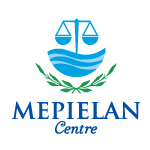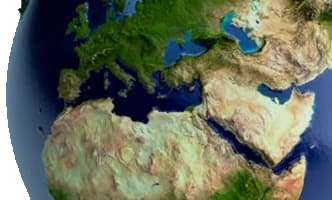In Geneva, on 2 July 2013, the Secretariat of the Convention on International Trade in Endangered Species of Wild Fauna and Flora (CITES)* has welcomed the Executive Order on Combating Wildlife Trafficking issued by the President of the United States, Barack Obama, on 1 July 2013.
The Executive Order addresses both its domestic and international response to the current surge in wildlife trafficking It consists of 6 Sections. Section 1, entitled “Policy”, defines the term “wildlife trafficking’’ and explains the reasons to combat wildlife trafficking. As the Executive Order notes: “Poaching operations have expanded beyond small-scale, opportunistic actions to coordinated slaughter commissioned by armed and organized criminal syndicates. The survival of protected wildlife species such as elephants, rhinos, great apes, tigers, sharks, tuna, and turtles has beneficial economic, social, and environmental impacts that are important to all nations”.
Moreover, according to this Section, executive departments and agencies are required to take all appropriate actions within their authority, including the promulgation of rules and regulations and the provision of technical and financial assistance.
According to Section 2 of the Executive Order entitled “Establishment”, a Presidential Task Force on Wildlife Trafficking is set up which is co-chaired by the Secretary of State, the Secretary of the Interior, and the Attorney General (or their designees). The Task Force is required to develop and implement a National Strategy for Combating Wildlife Trafficking.
Section 3 of the Executive Order refers to the membership of the Task Force, while the Section 4 designs its functions and Section 5 establishes an Advisory Council on Wildlife Trafficking that will make recommendations to the Task Force and provide it with ongoing advice and assistance.
The last Section on General Provisions provides that this executive order will be implemented in consistency with applicable domestic and International law, subject to the availability of appropriations.
At the same time, UNEP has profiled a new tool for dating elephant husks as well as a poster campaign to curb demand for illegal wildlife products. Nearly 25 years after an international ban was placed on ivory, African elephants are still being slaughtered. By allowing the trade of ivory acquired before 1989 to continue, the ban put the burden on executive authority to distinguish between legal ivory and poached.
In view of this situation, a new method for dating elephant tusks was developed as described in the latest issue of the Proceedings of the National Academy of Sciences (PNAS). “We’ve developed a tool that allows us to determine the age of a tusk or piece of ivory, and this tells us whether it was acquired legally,” said the study’s lead author, Kevin Uno, a postdoctoral researcher at Columbia University’s Lamont-Doherty Earth Observatory. The disappearance of the African elephant could change the structure of Africa’s savannahs, ecologists say.
It is very promising that International regimes, like CITES, seem to arouse the interest of states’ executive power to promote efficient environmental tools in order to control wildlife trafficking and its effects on biodiversity.
Note
* CITES was signed in Washington D.C. on 3 March 1973 and entered in to force on 1 July 1975. With 178 Member States, CITES remains one the most powerful global tools for biodiversity conservation. CITES regulates international trade in close to 35,000 species of plants and animals including their products and derivatives.
Source: UNEP, IISD Reporting Services, CITES
For Further Information:
http://www.cites.org/eng/news/pr/2013/us_wildlife_eo.pdf
http://www.cites.org/eng/news/pr/2013/20130702_us_eo.php
http://www.unep.org/newscentre/Default.aspx?DocumentID=2723&ArticleID=9560&l=en
http://www.unep.org/newscentre/Default.aspx?DocumentID=2723&ArticleID=9558&l=en
About the author

MEPIELAN Centre
MEPIELAN Centre is an international research, training and educational centre established by Professor Evangelos Raftopoulos at the Panteion University of Athens in 2008.
Before its establishment as a University Centre, MEPIELAN operated as a successful international research, training and informational programme (2002-2007) under the scientific direction of Professor Evangelos Raftopoulos and the aegis of the Panteion University of Athens, supported by the Mediterranean Action Plan/UNEP and the Greek Ministry of the Environment, Physical Planning and Public Works.
MEPIELAN Centre is an accredited UNEP/MAP PARTNER (since 2013), a Member of the Mediterranean Commission on Sustainable Development (MCSD) (since 2016), and a Member of the Steering Committee of the MCSD (since 2019).
On 22 May 2022, MEPIELAN Centre proceeded to the development of MEPIELAN as a Non- Profit Civil Organization (INGO) for the more effective and efficient advancement of its Goals and Missions and furtherance of its activities. MEPIELAN Centre as a Non- Profit Civil Organization (INGO) is registered in Greek Law (Hellenic Business Registry, Reg. No. 16477300100) in accordance with Laws 4072/2012 & 4919/2022 as applicable


